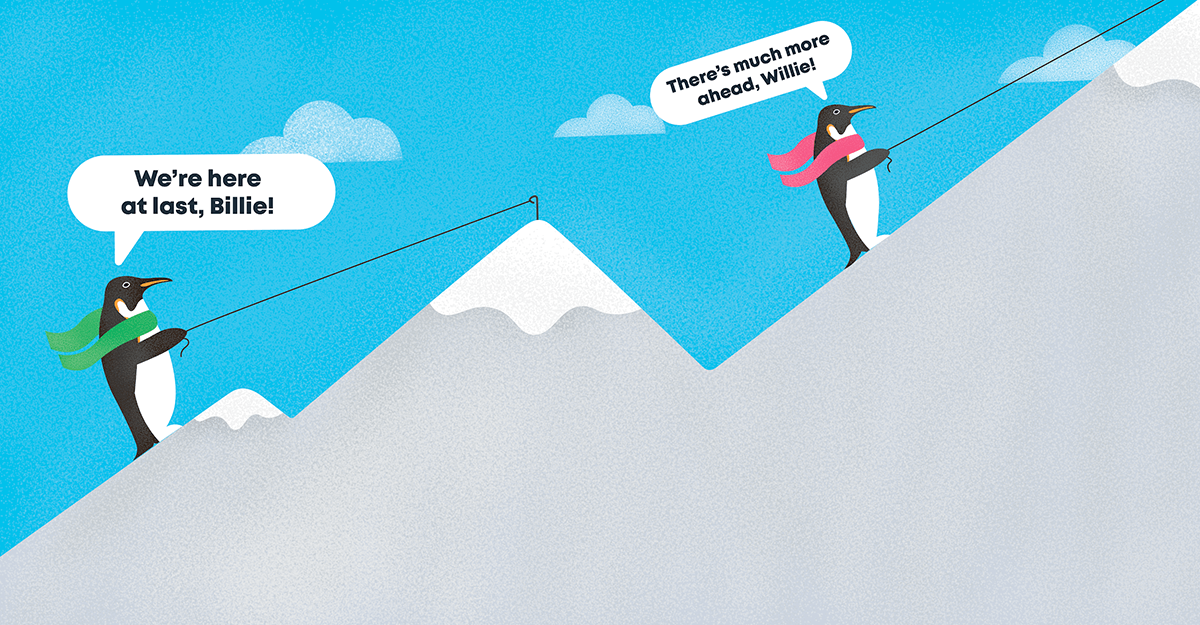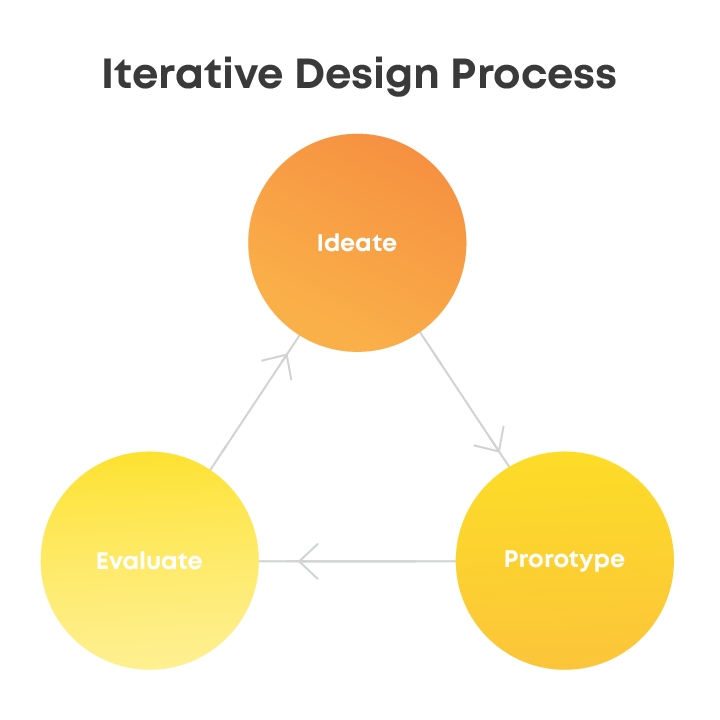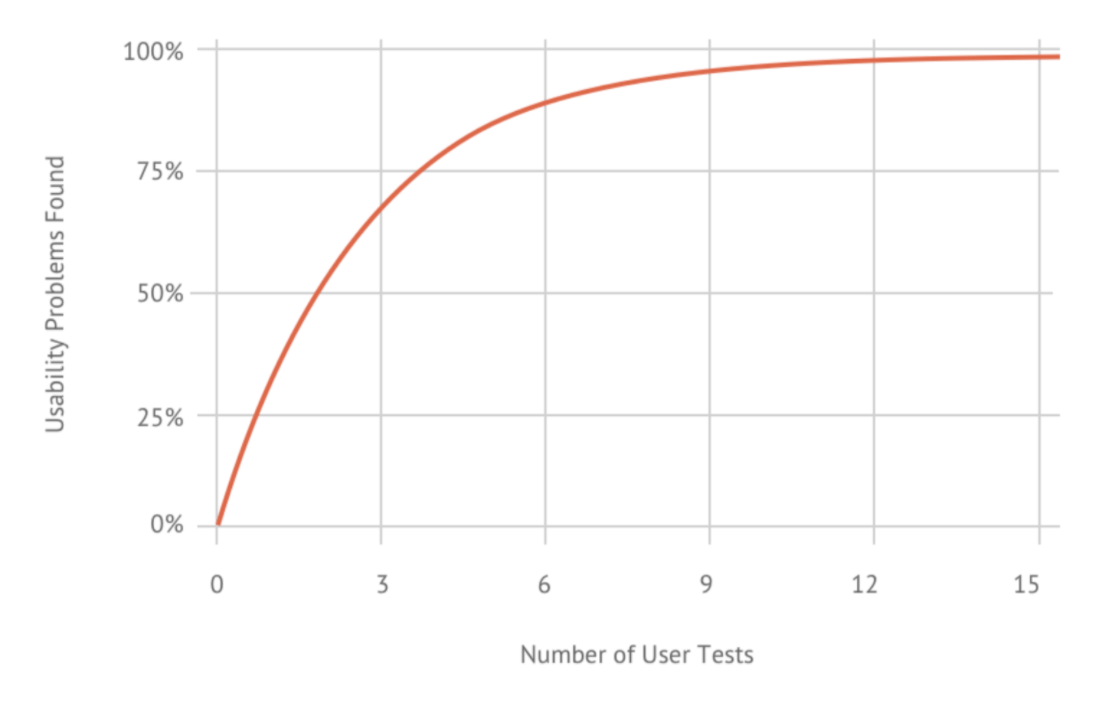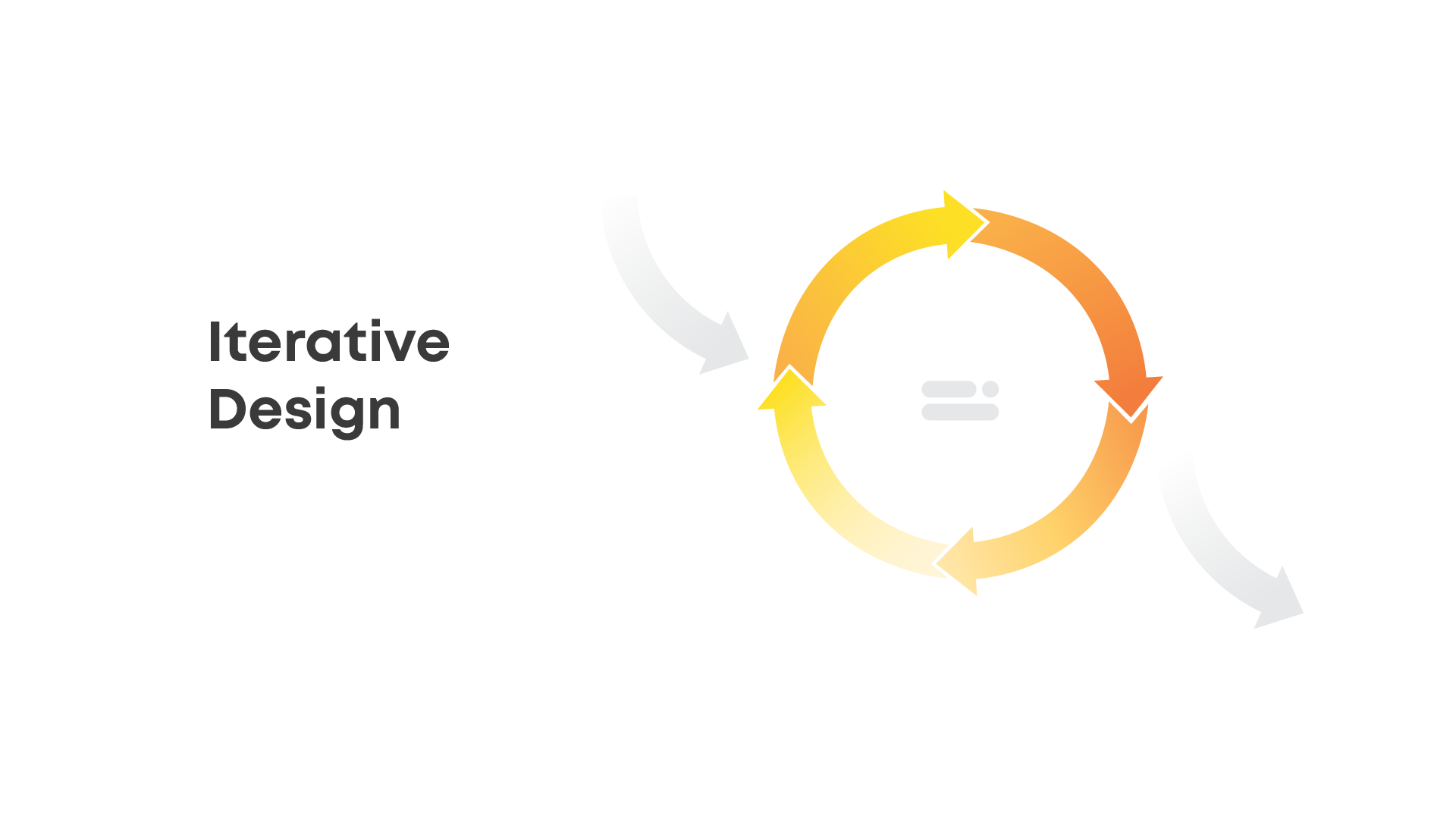Here’s a typical product story. You have a killer idea and a pretty good app, but you encounter some challenges:

- Your users have a hard time figuring out how to use your app.
- Users start their acquaintance with your app but they quickly quit and drop off.
- You make changes based on user feedback. Later on, you find out that the other group doesn’t like these changes (choose:???? ???)
- Or even better: you don’t really know what actually happens with your app once it’s out!
In these cases, you shouldn’t take chances and guess what you have to change. You need a guided process to maximize your chances of hitting the right spot and moving your business in the right direction.
The iterative design process does exactly that.
In this article, we’re going to describe an iterative design process and explain how it can help improve your product based on user feedback and your unique business insights.
What is the iterative design process?
In the most basic sense, it’s an approach that positions project design as a continuous process of improvement. During the iterative design process, every part of a digital experience is designed, built, and analyzed for usability and efficiency.
The product may look complete at one moment. But as your business matures or you start reaching a broader audience, the users’ needs and behaviors will most likely differ. Additionally, new trends or competitors’ products may make your app feel somewhat outdated or irrelevant. Therefore, you need to incorporate a mindset of constant change and evolution.
Iterative design can be employed at any phase of the design process, even after the product launch. However, it’s recommended to take it up as early as possible.
Airbnb case
t the end of the 2000s, Airbnb was facing bankruptcy. After investigating the reasons behind their lagging business performance, they quickly identified the main problem.
In short, many of their profiles had really bad photos taken by the apartments’ owners. This had a clear impact on travelers deciding to not book their accommodation through the platform, instead opting for the competitors’ accommodation.
Airbnb responded to this issue by deciding to take photos themselves. The result was astonishing. They doubled their revenue after a week. It was the true start of the great ever-developing company. All thanks to putting themselves in the shoes of their customers who didn’t want to stay in places with unappealing photos.
The Airbnb case demonstrates the real power of the iterative model – to hear your users, seek the problem, and come up with a solution. Iterative design is a way to innovate too. By creating multiple prototypes, testing them, and making changes based on customer feedback, we can study our users and their needs, define their goals or problems, and come up with solutions that are not obvious otherwise.
Stages of the iterative design process
The mere concept behind the iterative design is super simple. There are several stages in the process, and they constantly repeat. This is the cycle in three key steps.
- Identifying users’ problems and coming up with an idea for a solution;
- Developing a prototype;
- Testing to check whether or not users are satisfied with the presented solution;
As you evaluate the results of the implemented solution, you come to the place where it all started – ideation. You think about how you can improve the product again, considering feedback. Then, build a prototype. After this, estimate whether users love the changes or not. Repeat the whole thing all over again until you are happy with the result (for now).

It’s important to mind the cyclical nature of this process not only in the big picture context. Constant reviews and refinements should occur in every element of the product and at every design stage.
What is “analysis” and why is it important?
One of the key processes in the iterative approach is being able to adequately analyze the data to make judgments about each new feature or change. Let’s hone in on this in a bit more detail.
Proper analysis is key to making the right product decisions and understanding whether the current functionality is working as intended.
There are many different ways an app can be tracked and analyzed after it has been released. Some of the most popular methods include:
- Heat Maps data visualization that shows patterns of how website users click, scroll, and move through the page
- A/B testing evaluates the difference in user behavior when presented with a variation of two (or more) variants of the same page
- Activity Tracking using tools like Google Analytics to monitor the overall use of the application, page visits, retention rates, etc.
Why should you start using iterative design?
What is a benefit of iterative design? Wooow, there is more than one reason to consider an iterative approach for custom application development.
Get user feedback
Collecting user feedback early on is a great way to see whether the product turns out the way you planned. User feedback provides crucial insights and often reveals things that aren’t necessarily pleasant to hear. Since we build solutions that serve real people, though, their opinions are essential for achieving the desired outcome.
It’s worth noting that seven to eight user interviews are typically sufficient in order to pinpoint core usability problems. Interviewing more users is great, but at that point, most of the problems will be uncovered already.

Rigorous testing is a huge source of feedback that can improve your website’s design, usability, and ultimately, your overall user experience.
Spot problems early
The cyclical nature of this approach gives the team a handful of opportunities to spot potential problems at the first stages of the design process rather than at the very end. It minimizes the possibility of making a mistake that would require a costly, time-consuming redesign (and potential redevelopment) later on.
Save time and money
It might seem that testing after every iteration is a long and tedious process. But, in fact, it’s more efficient this way. Fixing problems and making improvements on the go ensures that we won’t have to re-do a massive amount of work like we would, should the issue present itself when the product is basically ready.
Conclusion
As you can see, the concept of iterative product development is quite simple. But it makes a day and night difference in terms of efficiency and overall quality. By testing things and making changes on the go, we make sure that the product not only meets the needs of its users but offers them a great user experience.




